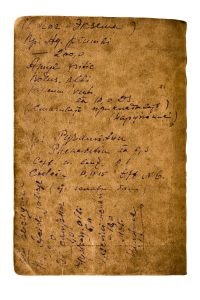2. Olive oil is the foundation of Italian food

Italian olive oil
Here’s a fun fact about Italian food: Italians do eat butter, especially in Northern Italy. But olive oil is the true foundation of Italian cuisine. Olive oil is used for frying, braising and sauce making. Many Italians consider olive oil their most important kitchen staple and are willing to pay up for high-quality extra virgin olive oil. Just make sure not to spill the olive oil.
Spain is the world’s largest producer of olive oil, not Italy, according to the International Olive Oil Council. Other large olive oil producers are Greece, Portugal, Tunisia, Turkey and Morocco.
Top Olive Oil Producing Countries
|
|
Production
|
| Spain |
766.4 |
| Italy |
288.9 |
| Turkey |
210 |
| Tunisia |
200 |
| Greece |
195 |
| Portugal |
150 |
| Morocco |
106 |
3. Pizza Margherita honors Queen Margherita of Savoy

Fun Fact about Italian food: Margherita named after the Queen of Savoy.
Italian pizza was born in Naples in the 1700s, with the now-famous Pizza Margherita created in 1889 to honor the Queen consort of Italy, Margherita of Savoy. The colors of Pizza Margherita — basil (green), mozzarella cheese (white), and tomatoes (red)—represent the Italian flag. Italian food is Italian culture. Food facts in Italy highlight the rich heritage and diverse types of pasta in Italian cuisine.
In fact, making Neapolitan pizza, an Italian dish from Southern Italy, is considered an art and has been awarded “Intangible Cultural Heritage” status by UNESCO. Author’s note: Pepperoni pizza is the best, as we all know.
4. Italian pasta used to be sweet
Italian pasta dishes date back to at least the 4th century BCE in Italy. Pasta was a sweet dish served with honey and sugar.
The Arab influence brought dried pasta to Italy in the 13th century, but it wasn’t until the 17th and 18th centuries that tomato sauce became the common accompaniment in Italian food.
Today, there are over 500 different types of pasta in Italian food, with each region having its own variations and names. There is literally a pasta shape to pair with every pasta dish.

Anelli
Wacky Pasta dish shapes
- Strozzapreti: “Priest stranglers” in Italian, twisted in a way that makes it look like a rope
- Radiatori: Shaped like tiny radiators, this pasta has a ridged surface that captures sauce well
- Farfalle: Bow-tie pasta
- Campanelle: Shaped like little bells or flowers, with ruffled edges
- Cavatappi: Corkscrew-shaped pasta, often described as looking like a telephone cord, with a spiral
- Orecchiette: “Little ears” in Italian, the pasta is shaped like small, concave discs.
- Conchiglie: Shaped like conch shells, these pasta shapes range in size from tiny to very large, with the ridged surface perfect for holding sauce.
- Anelli: Tiny ring-shaped pasta often mistaken for mini donuts
5. Italian cuisine inspired one of the world’s first printed cookbooks

Old Italian cookbook
Italy produced the world’s first printed cookbook, De honesta voluptate et valetudine (On Right Pleasure and Good Health), published in Venice in 1475. The book was written by Bartolomeo Platina, an Italian Renaissance era polymath, humanist and gastronomist. He was the world’s first food nerd and recorded the first official list of fun facts about Italian food.
Initially a soldier, Sacchi later gained patronage from the Gonzaga family of Mantua of Lombardy in Northern Italy. Platina’s cookbook compiled Roman and medieval Italian culinary traditions, helping to spread Italian fine dining concepts across Europe. It marked the first time a cookbook was mass-produced using the printing press, making Italian cuisine more widely accessible.
6. An authentic Italian breakfast consists of milky coffee and some bread or pastry

Italian breakfast
Italian coffee culture is deeply ingrained, with Italians consuming 14 billion espressos annually. But cappuccino is a morning beverage. It is an unspoken rule in Italy to avoid ordering cappuccino after 11 AM.
Another unspoken rule of Italian coffee culture is that Italians rarely, if ever, drink coffee on the go. Coffee in Italy food culture is where one sits to enjoy and consume coffee. I hate rules around food, but rules are sometimes worth it for a delicious Italian meal.
7. The aperitivo and passeggiata are part of Italian food culture

Pizza at an aperitivo
While not a fun fact about Italian food per se, Italians often go out for an aperitivo before dinner. The Italian aperitivo is like ‘Happy Hour.’ Unlike in the United States, drinks are not discounted but food is included.
The aperitivo originated in Milan, in Northern Italy. Italians head to a wine bar with friends and catch up with a relaxing post-work drink and some light snacks. Common beverages at aperitivo are wine, Aperol Spritz or Campari Spritz.
For most Italians, the main meal is lunch around 1 pm or 2 pm with dinner coming around 8 pm or 9 pm. The aperitivo fits in the perfect gap before a meal.
Related fun fact: between 5 PM and 8 PM, many Italians enjoy a passeggiata, or evening stroll around the city or Italian landscape. This pre-dinner activity aids digestion and is a social occasion to catch up with friends and neighbors.
8. McDonald’s in Italy scaled up by absorbing their largest competitor and creating a supplier
![fun facts about Italian food: McDonalds bought in to the local market]()
McDonald’s in Northern Italy
The first Italian McDonald’s opened in Bolzano in Northern Italy. The company adjusted to Italian cuisine by adding fresh pasta bars to its stores.
Burghy was a hamburger restaurant in Northern Italy, founded in 1981 in Milan. It was owned by the Cremonini Group, a beef distributor.
By 1996, Burghy had 96 restaurants; McDonald’s had 38. McDonald’s acquired and absorbed Burghy, in exchange for Cremonini Group becoming McDonald’s official meat distributor in Italy.
So, I guess a Big Mac is an authentic Italian dish. I am going to experience Italian food at my local golden arches.
Frequently Asked Questions About Italian Food
What is Italy’s national dish?
Known as spaghetti bolognese, ‘Ragu alla Bolognese’ is recognised as the national dish of Italy.
Why is pizza Margherita considered special?
Pizza Margherita was created in 1889 to honor Queen Margherita of Savoy. Its toppings—basil (green), mozzarella (white), and tomatoes (red)—represent the colors of the Italian flag.
What do Italians typically eat for breakfast?
A traditional Italian breakfast is light and simple, typically consisting of milky coffee (such as cappuccino) and a pastry or bread. Unlike in other countries, Italians do not usually eat large or savory breakfasts.








